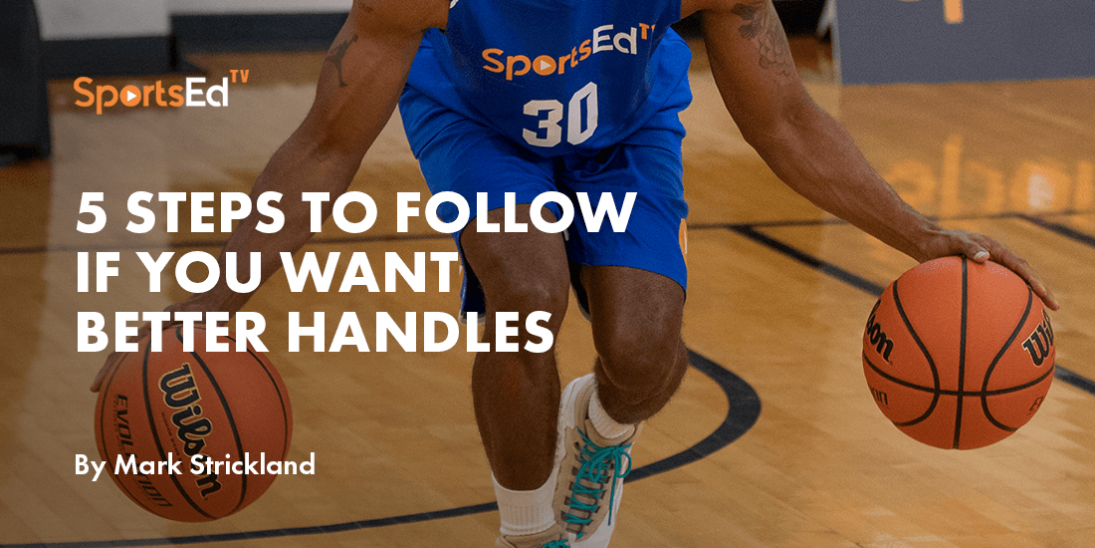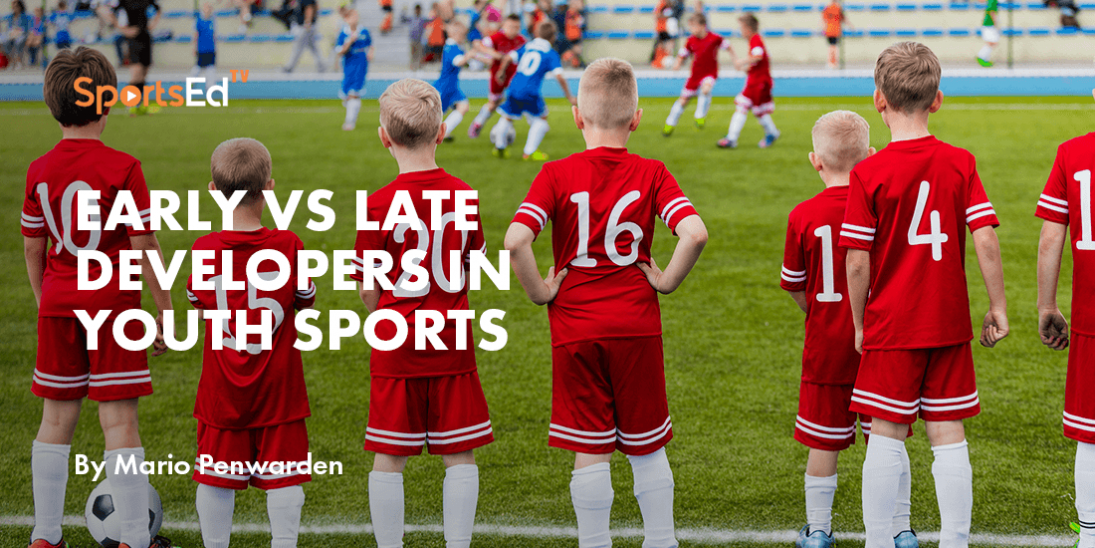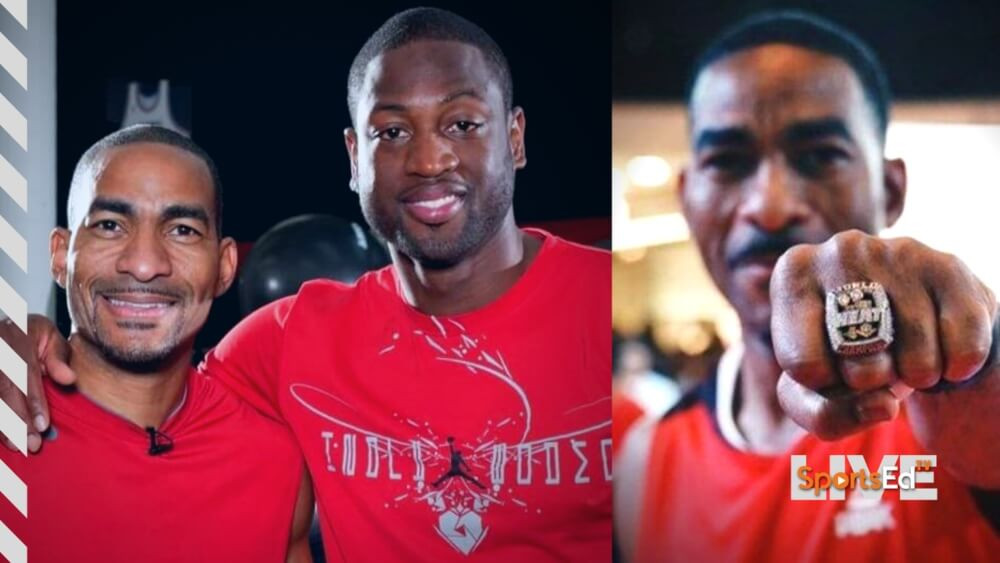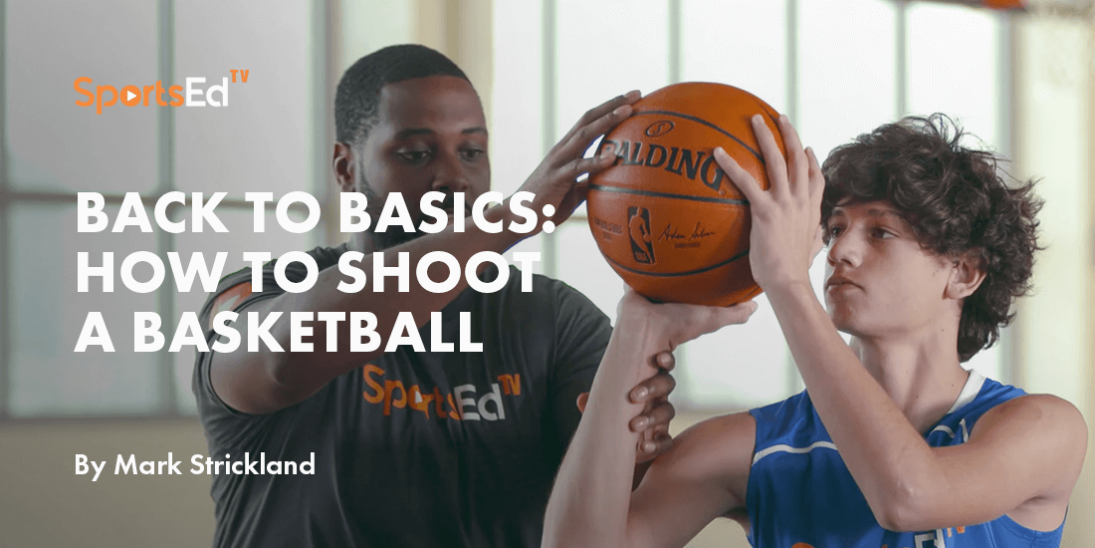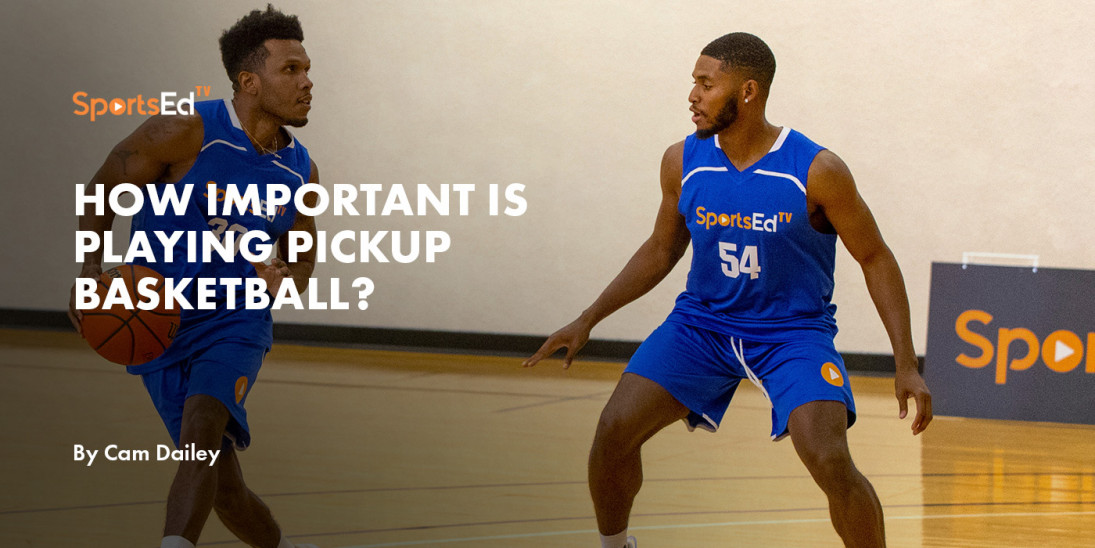Basketball
Welcome and thanks for visiting...

SportsEdTV Talks to Ray Allen
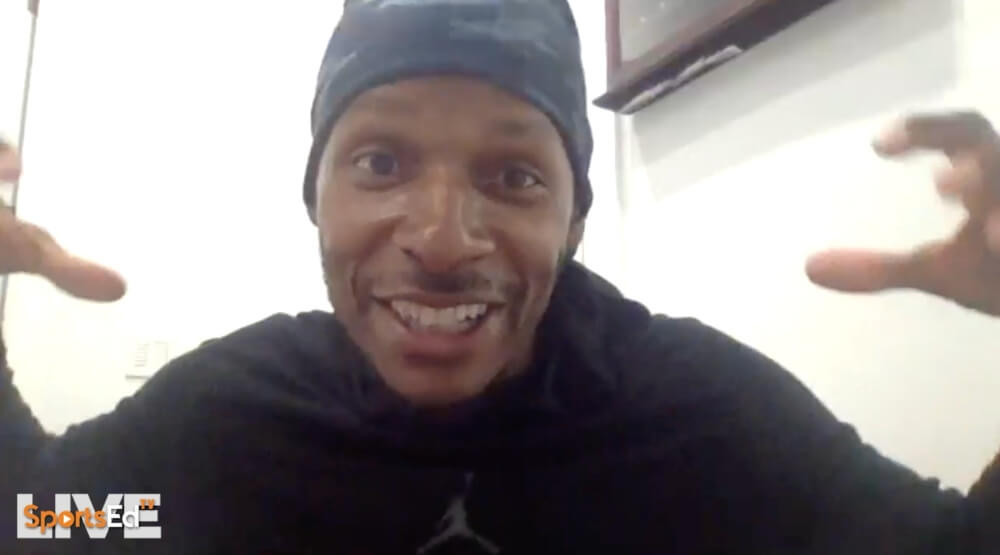
Ray Allen joined SportsEdTV Basketball’s Executive Director, Mark Strickland, and Content Manager, Jaki Goldner to discuss Moving Without The Ball.
Moving without the ball is one of the most important skills in developing a solid basketball IQ and producing for your team. Known as one of the best long-range shooters in NBA history, Allen welcomed a variety of ways to disrupt defenses and find an open shot, all through his movement on the floor.
Here’s what you can learn from Ray:
SportsEdTV: What are the top three things that the younger generation should take away from your game?
Ray Allen: The top three things I would say, one, that I wasn't by any stretch of the imagination the best player on the floor most nights, you know, growing up in high school and even in college, I got to where I ultimately got was because I just was the best worker and talented.
It's not. Talent is not a thing. It's just hard work revealed.
So ultimately, when you see a person and talented on a floor and you see him do an amazing thing, this is a person that's completely worked their butt off.
You know, it takes physical conditioning to be at your best because fatigue makes cowards out of all of us. So you see those kids got their hands on their knees running, during a time out or they're on a free throw line. You got to figure out when to get those breaks, those moments. But if you're tired on the basketball floor, or in any sport for that matter, you're going to take a shortcut. You're going to find a way to do something less and take the easy route.
You may not find out immediately, but come in the fourth quarter of your tired but easy road is gonna cost you a rebound. It's going to cost you a charge. It's going to cost you a turnover, something that ultimately is going to result in you having fewer points than you're opponent.
And I think I can name a lot of but just name three of them as a basketball player. We get so caught up in, you know, being the best player or starting, people are upset that they're not starting. But, you know, the compliment is to those to those who finished. And so if I can implore every person, every young person is playing basketball to be a great free-throw shooter, you know, I’m on my boys all day long.
The best free-throw shooters, before they leave the floor, they have to make eight out of 10 free throws and sometimes they don't make it, sometimes they make six out of 10, seven, 10.
And I tell them, I say, you're six out of ten, seven of can't play for me. You can't get on the floor because I need somebody who is gonna help me win games at the end because you just decided by fewer than five points most often. If you look at the team that loses, you missed ten to fifteen free throws. If I missed two free throws, one, you become clutch down the stretch and two, you put yourself in a situation where you shoot a lot of you're actually working on your jump shot without a jump.
You know, that's where you work when you're timing. So if I can get these kids to be methodical about work in their free throws, then it's a whole approach to a system that allows them to prepare and really put the work in. and don't shoot free throws that are conflict-free throws. Run to the end of your block and come back to your basketball hoop and issued a free throw, which you panting like you can't even pick your head up and then shoot that free throw because nine times out of ten, that's the position that you're going to be in in the game on the free-throw line.
I told my son, you know, he was frustrated because brothers passed him back past the end of losing in the drill. And afterward, after he shot, I said, listen.
I know you're upset, and when I know that you're mad, they didn't get you the ball fast enough and in you to make free throws in your face got kind of funky. I said this is what sports is supposed to do, is supposed to put you in a situation where you're uncomfortable and you're pissed off at somebody or something.
SportsEdTV: People would say that you were always in the right place at the right time, you know, causing running a lot of players in circles, causing a lot of problems for defenses, having multiple guys on you throughout the games. How do you develop court vision and a good understanding of usable movements?
Ray Allen: All you know, all of the above - keeping a full perspective.
If you could shoot threes if you have a mid-range. If you could put the ball on the floor, if you can make a left-hand layup, you're on. You can get anywhere on the floor. You just have to prepare for that. Those moments. No situation you can practice on one side of the floor.
You have to kind of be, you know, somewhat autonomous all over the floor, backpedal and do your shots like you can understand what the lines mean. And, you know, if you're looking down the three-point line. Just understanding the distance between the three-point line to the basket and then, you know, not always relying on the three-pointer, but getting into your mid-range shot, knowing how to explode up from the ball left angle.
Ultimately the idea behind being this person that can kind of get anywhere on the spot is, you said I always seem to be at the right place, the right time, that's because the ball finds energy always. You know, you continue to move energy just like in life, like you sense good energy.
You want to be next to good energy. You can't suppress energy. You know, it's always gonna be there. Say you find your energy and you keep moving regardless of what happens on the floor, like you're going to be running and all of a sudden the ball's and go up and then bam, this is going to end up in your hands, you know. And then I make a move about, not necessarily to that. I'm going to shoot it, but then I take two dribbles and I pass it.
I created a motion or movement for someone else. So the more I pass the ball, the more the ball comes back to me. And I can constantly be moving because people aren't willing to move. That way I'm on the move and the minute they stop, I'm still moving. That's when I get open.
It seems a lot of time like it was random, which you know it was. But you become so good at the randomness that it becomes almost consistent and it becomes something that has been tried and prepared to exist.
SportsEdTV: When did it click for you that your motor was an advantage?
Ray Allen: I chose the right college in the beginning because I think that that's the way basketball's supposed to be played. Not where you get the ball over half court, run a set, pass the ball four or five times, and then you score like, yeah, you can do that, but the whole point in basketball is to overpower your opponent.
If you're in better shape than they're in, you beat them down the floor, then you pressure them and you force turnovers by death.
It requires the commitment of conditioning that a lot of people aren't willing to commit to. Are you willing to run more and practice? You know, I always believe that. If you lost in the drill, you had to run like it wasn't a punishment. I was actually the person that was benefiting from losing. I don't like losing. But I'm benefiting because I'm getting in better shape.
SportsEdTV: You see a lot of trainers focusing on one-on-one moves or the individual moves might get the highlight that we see on social media. Does today's hype culture and flex culture affect today’s players and their abilities to move without the ball?
Ray Allen: Well, if you go back to I remember being in the locker room, I remember exactly where I was standing. This was in Milwaukee. There's a TV when you come off the court, right. When you walk in and there's a TV. I remember standing there because I was coming out of the shower and this was when Vince Carter first got to the league. He had maybe two or three amazing dunks and then T-Mac had two amazing dunks, and then that was the highlight.
And then when you saw their scores, they each had like eight points to twelve points. But the way the highlights when they see what they are already. Yeah. Man. They must've killed it then.
And I think it's the sensationalism that we see in the media. I think the young kids look at it and you watch on TV and you think that's all it ever is about. You know, one of my favorite players to ever watch. And I mean, a total monster to play against. And when I say monster, you're imagining somebody is going to come over you dunk on you. Who is crazy talented but the best I've ever played? You know, obviously, I give a nod to MJ. But, you know, John Stockton - he was that guy.
John Stockton. You know, I'm sure he dunked when he was in his prime, but you never saw it. He barely did a no-look pass or, you know, it was fancy. But all-time leaders, an assistant steals because he played hard, every single possession. Not enough is talked about with him because he's a guy that anybody can be like and make it to the NBA and play at such a high level.
And what we do is we chase those people. We're less likely to be like, you know, gifted and that's a freak. Like Antetokounmpo. How many are going to grow to be 6’ 11”, 7 feet with 7’ 2” wingspan? Not that many. He’s otherworldly.
But the people who we see every single day, those are the ones that we have to emulate because you see their work, you've seen it put it in. And I think when it comes to these trainers, there's a sense of these young people or it's like they're trying to make the home run play as opposed to right-hand dribble, left-hand dribble, free throws at everything.
You do the fundamentals so that when a person sees you come out on the floor and they want to play, they're like, wow, this dude has the fundamentals to play this game. And I love to watch him play. And that any college coach can say, I can deal with that. I can take that guy, I could mold him into something special. I think that's the baseline that we have to teach these kids as opposed to, you know, taking them to the Rucker. And you've got to be able to be a highlight factory.
Here are some moves you can work on to improve your movement without the ball:
1. CUTS - Cuts allow you to draw your defender in one direction before exploding for the ball in the other:
2. One-Two Step - Stepping into your shot properly from all types of movements is key in being an effective scorer:

